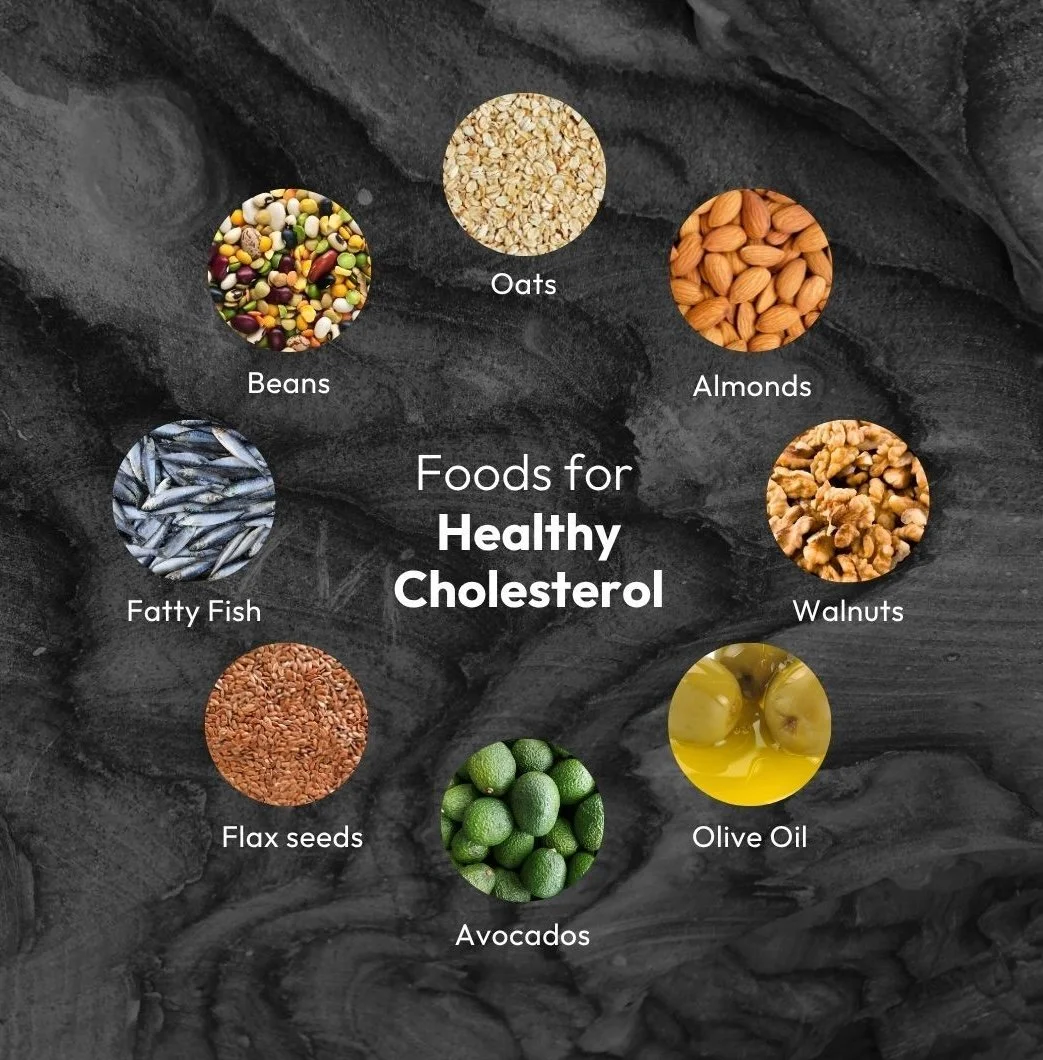Cholesterol Decoded. The Good, the Bad and the Surprising
When you hear the word cholesterol, do you instantly picture a doctor frowning at a blood test? Let’s clear the air: cholesterol isn’t automatically a villain. In fact, your body needs it — in the right balance — to stay healthy.
🥇 Meet the “Good” One: HDL
HDL, or High-Density Lipoprotein, is often referred to as the “good” cholesterol because it acts like a tiny clean-up crew within your body. It diligently scoops up excess cholesterol from your bloodstream and transports it back to the liver, where it can be recycled or eliminated. The higher your HDL levels, the more efficiently your body can tidy up cholesterol, supporting overall heart health and wellbeing.
How to boost it (naturally):
• Regular exercise (even brisk walks, aerobic exercises or dance breaks!)
• Healthy fats: olive oil, avocados, nuts, fatty fish (salmon, mackerel, sardines)
• Avoid trans fats and limit saturated fat consumption
• Include soluble fibre sources, such as oats, barley, fruits and vegetables
• Quitting smoking (if you smoke)
• Moderate alcohol (a small glass of red wine can gently raise HDL, but only if you already drink)
• Consider incorporating niacin (vitamin B3) under medical guidance, which can help raise HDL levels
• Manage stress through mindfulness practices, as chronic stress can negatively impact cholesterol balance
🚩 The “Bad” One: LDL
• LDL (Low-Density Lipoprotein) is often called “bad” cholesterol because too much can stick to artery walls and form plaque.
• That buildup can narrow arteries, raising the risk of heart attack or stroke.
🧮 Can Cholesterol Be Too Good?
Yes—a blood test might show “high cholesterol,” but if that number is elevated due to a high level of HDL (the “good” cholesterol) alongside normal LDL (the “bad” cholesterol), it is usually not a concern. However, if total cholesterol is very high and both LDL and HDL are elevated, doctors often assess the ratio of total cholesterol to HDL, calculated as total cholesterol divided by HDL. A lower ratio is preferable, with a typical goal being less than 5. While extremely high HDL levels (above approximately 100 mg/dL) are uncommon, researchers continue to debate whether such levels are always protective; ultimately, maintaining balance is key.
🧬 The Influencers: Age, Genes & Health
Cholesterol levels tend to rise with age due to changes in liver function and hormone levels, which can affect how fats are metabolised in the body. Genetics also play a significant role; some individuals inherit genes that cause low-density lipoprotein (LDL) cholesterol to remain elevated despite maintaining a healthy lifestyle. In addition, various medical conditions such as diabetes, thyroid disorders, kidney or liver disease, and the use of certain medications like steroids can contribute to increased LDL levels, or decreased high-density lipoprotein (HDL) cholesterol. Lifestyle factors—including diet, physical activity, and smoking—also influence cholesterol, but understanding these biological and genetic influences is crucial for managing cardiovascular health effectively.
Food & Drink Hacks
To boost the good (HDL):
• Oily fish (salmon, mackerel, sardines)
• Nuts and seeds
• Olive oil and avocado
• High-fibre foods such as oats, beans, and lentils
• Colourful fruit and vegetables (antioxidants!)
To ease off the bad (LDL):
• Processed meats
• Fried foods
• Full-fat pastries and doughnuts
• Too much cheese or cream
• Sugary drinks and heavy alcohol
💧 Hydration tip: Staying well-hydrated helps your liver process fats more efficiently.
🌟 Surprising Facts
• Your liver makes about 75% of the cholesterol in your body; diet is just one piece of the puzzle.
• Cholesterol is essential for making hormones (oestrogen, testosterone, cortisol) and vitamin D.
• Without cholesterol, your cells couldn’t build strong membranes or produce bile acids to digest fats.
• Plant sterols (found in fortified spreads, nuts, seeds) can block some cholesterol absorption.
• Moderate consumption of red wine has been associated with a potential positive effect on HDL (high-density lipoprotein) cholesterol, as red wine contains antioxidants, particularly polyphenols like resveratrol - remember, the key word is moderation! Excessive alcohol intake can have serious negative health consequences.
Fallon’s Takeaway
Cholesterol isn’t the enemy — it’s a balancing act. Aim for:
• High HDL, low LDL, and a healthy overall ratio.
• Nourish your body with good fats, fibre, colourful produce, and movement you enjoy.
Cholesterol levels can indeed fluctuate over time due to various factors mentioned above. Short-term changes might occur after eating fatty foods or during periods of illness, but significant alterations typically develop over weeks or months. Changing your cholesterol levels is achievable but not necessarily easy. It often requires consistent lifestyle adjustments. Sustainable improvements come from gradual, intentional habits rather than quick fixes. Regular monitoring and working with healthcare professionals can help track progress and tailor strategies to your individual needs.
💫 Remember: wellness isn’t about perfection — it’s about giving your body the right tools so it can do its amazing behind-the-scenes work (including managing cholesterol!) every day.
Love from Fallon, with intention xox
Disclaimer
The content provided in our articles is provided for information purposes only and is not a substitute for professional advice and consultation, including professional medical advice and consultation; it is provided with the understanding that Fallon is not engaged in the provision or rendering of medical advice or services. The opinions and content included in the articles are the views only and may not be scientifically factual. You understand and agree by reading anything on our website that Fallon shall not be liable for any claim, loss, or damage arising out of the use of, or reliance upon any content or information published. You acknowledge and agree that Fallon, its authors, and contributors are not liable for any adverse reactions or consequences resulting from the use or misuse of the information provided. Always exercise caution and prioritise your health and safety. Images are from Pinterest, if you know the original creator please let us know, so that we can credit them.

